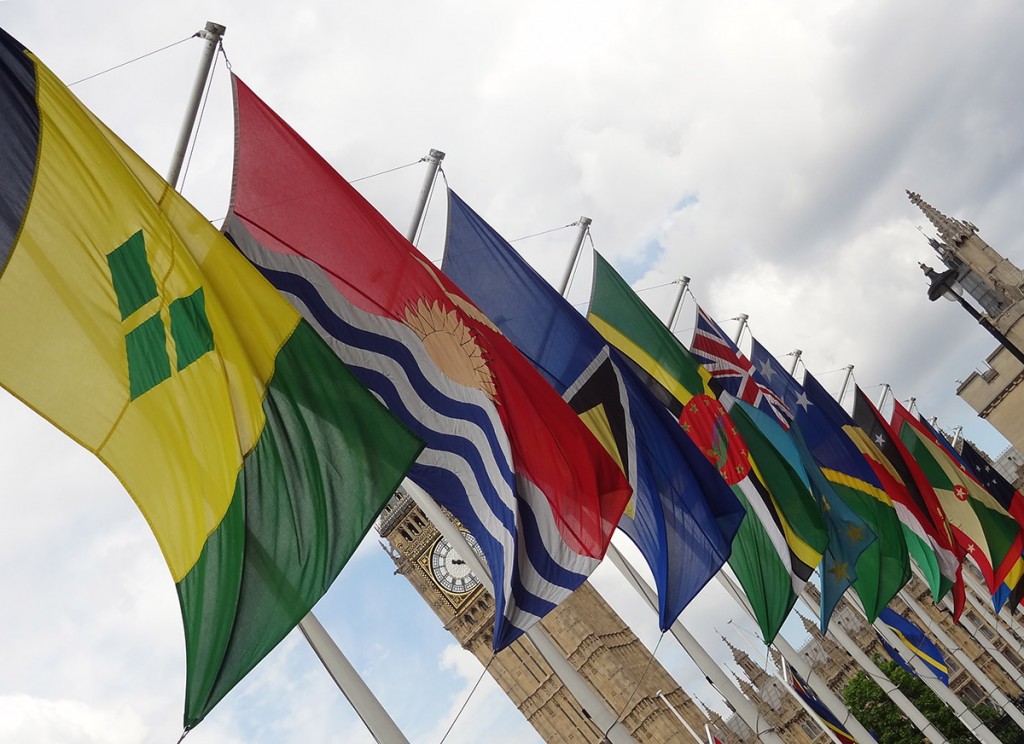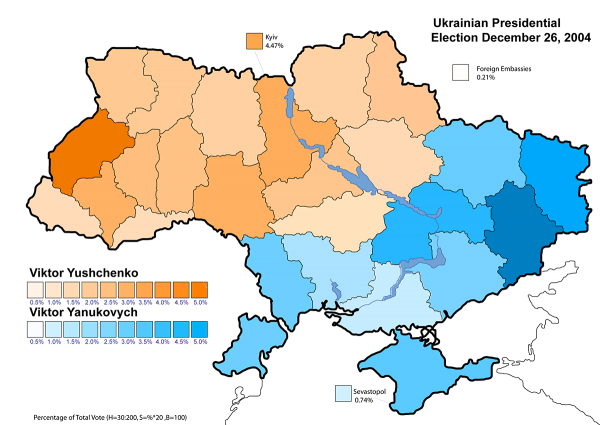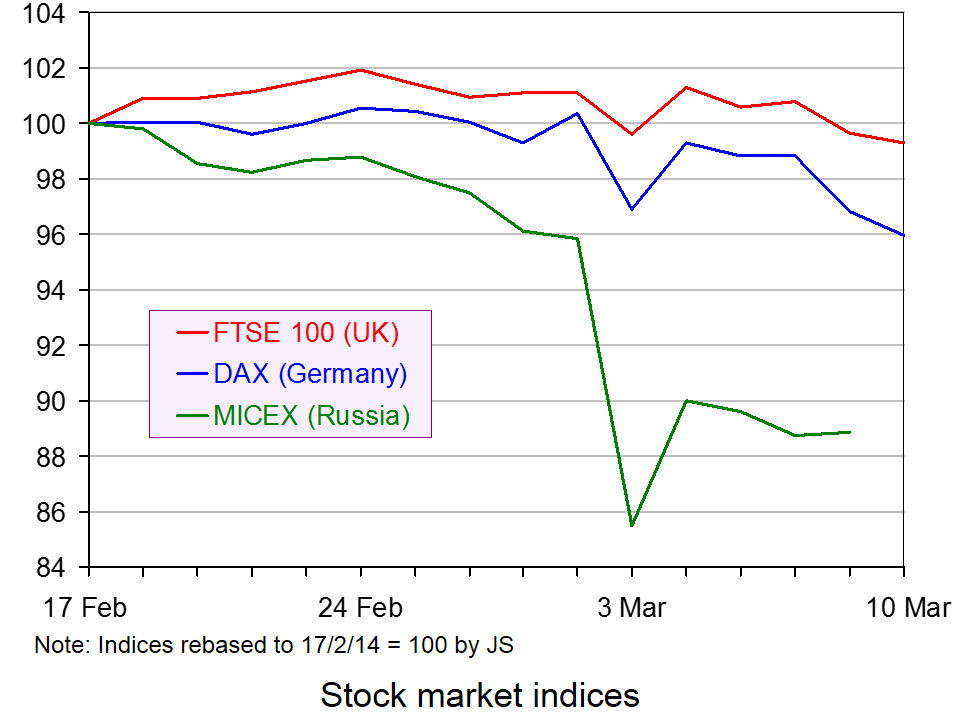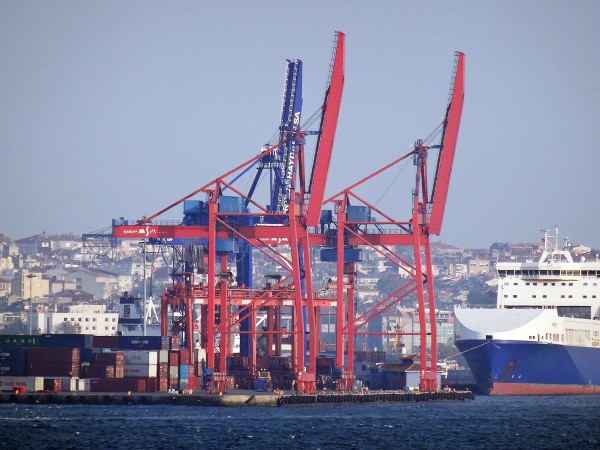 The period from the end of the Second World War until the financial crisis of 2007–8 was one of increasing globalisation. World trade rose considerably faster than world GDP. The average annual growth in world GDP from 1950 to 2007 was 4.2%; the average annual growth in world merchandise exports was 6.7%.
The period from the end of the Second World War until the financial crisis of 2007–8 was one of increasing globalisation. World trade rose considerably faster than world GDP. The average annual growth in world GDP from 1950 to 2007 was 4.2%; the average annual growth in world merchandise exports was 6.7%.
And there were other ways in which the world was becoming increasingly interconnected. Cross-border financial flows grew strongly, especially in the 1990s and up to 2007. In the early 1990s, global cross-border capital flows were around 4% of world annual GDP; by 2007, they had risen to over 20%. The increasing spread of multinational corporations, improvements in transport, greater international movement of labour and improved communications were all factors that contributed to a deepening of globalisation.
 But have things begun to change? Have we entered into an era of ‘deglobalisation’? Certainly some indicators would suggest this. In the three years 2012–14, world exports grew more slowly than world GDP. Global cross-border financial flows remain at about one-third of their 2007 peak. Increased banking regulations are making it harder for financial institutions to engage in international speculative activities.
But have things begun to change? Have we entered into an era of ‘deglobalisation’? Certainly some indicators would suggest this. In the three years 2012–14, world exports grew more slowly than world GDP. Global cross-border financial flows remain at about one-third of their 2007 peak. Increased banking regulations are making it harder for financial institutions to engage in international speculative activities.
What is more, with political turmoil in many countries, multinational corporations are more cautious about investing in such markets. Many countries are seeking to contain immigration. Fears of global instability are encouraging many firms to look inwards. After more than 13 years, settlement of the Doha round of international trade negotiations still seems a long way off. Protectionist measures abound, often amount to giving favourable treatment to domestic firms.
 The Observer article considers whether the process of increased globalisation is now dead. Or will better banking regulations ultimately encourage capital flows to grow again; and will the inexorable march of technological progress give international trade and investment a renewed boost? Will lower energy and commodity prices help to reboot the global economy? Will the ‘Great Recession’ have resulted in what turns out to be merely a blip in the continued integration of the global economy? Is it, as the Huffington Post article states, that ‘globalization has a gravitational pull that is hard to resist’? See what the articles and speech have to say and what they conclude.
The Observer article considers whether the process of increased globalisation is now dead. Or will better banking regulations ultimately encourage capital flows to grow again; and will the inexorable march of technological progress give international trade and investment a renewed boost? Will lower energy and commodity prices help to reboot the global economy? Will the ‘Great Recession’ have resulted in what turns out to be merely a blip in the continued integration of the global economy? Is it, as the Huffington Post article states, that ‘globalization has a gravitational pull that is hard to resist’? See what the articles and speech have to say and what they conclude.
Articles
Borders are closing and banks are in retreat. Is globalisation dead? The Observer, Heather Stewart (23/5/15)
Is Globalization Finally Dead? Huffington Post, Peter Hall (6/5/14)
Speech
Financial “deglobalization”?: capital flows, banks, and the Beatles Bank of England, Kristin Forbes (18/11/14)
Questions
- Define globalisation.
- How does globalisation affect the distribution of income (a) between countries; (b) within countries?
- Why has the Doha round of trade negotiations stalled?
- Examine the factors that might be leading to deglobalisation.
- What are the implications of banking deglobalisation for the UK?
- Are protectionist measures always undesirable in terms of increasing global GDP?
- What forces of globalisation are hard to resist?
 One of the reasons why it is so hard to forecast economic growth and other macroeconomic indicators is that economies can be affected by economic shocks. Sometimes the effects of shocks are large. The problem with shocks is that, by their very nature, they are unpredictable or hard to predict.
One of the reasons why it is so hard to forecast economic growth and other macroeconomic indicators is that economies can be affected by economic shocks. Sometimes the effects of shocks are large. The problem with shocks is that, by their very nature, they are unpredictable or hard to predict.
A case in point is the current crisis in Ukraine. First there was the uprising in Kiev, the ousting of President Yanukovich and the formation of a new government. Then there was the seizing of the Crimean parliament by gunmen loyal to Russia. The next day, Saturday March 1, President Putin won parliamentary approval to invade Ukraine and Russian forces took control of the Crimea.
 On Monday 3 March, stock markets fell around the world. The biggest falls were in Russia (see chart). In other stock markets, the size of the falls was directly related to the closeness of trade ties with Russia. The next day, with a degree of calm descending on the Crimea and no imminent invasion by Russia of other eastern parts of Ukraine, stock markets rallied.
On Monday 3 March, stock markets fell around the world. The biggest falls were in Russia (see chart). In other stock markets, the size of the falls was directly related to the closeness of trade ties with Russia. The next day, with a degree of calm descending on the Crimea and no imminent invasion by Russia of other eastern parts of Ukraine, stock markets rallied.
What will happen to countries’ economies depends on what happens as the events unfold. There could be a continuing uneasy peace, with the West effectively accepting, despite protests, the Russian control of the Crimea. But what if Russia invades eastern Ukraine and tries to annex it to Russia or promote its being run as a separate country? What if the West reacted strongly by sending in troops? What if the reaction were simply sanctions? That, of course would depend on the nature of those sanctions.
Some of the possibilities could have serious effects on the world economy and especially the Russian economy and the economies of those with strong economic ties to Russia, such as those European countries relying heavily on gas and oil imports from Russia through the pipeline network.
Economists are often criticised for poor forecasts. But when economic shocks can have large effects and when they are hard to predict by anyone, not just economists, then it is hardly surprising that economic forecasts are sometimes highly inaccurate.
What Wall Street is watching in Ukraine crisis USA Today (3/3/14)
Ukraine’s economic shock waves – magnitude uncertain Just Auto, Dave Leggett (7/3/14)
Ukraine: The end of the beginning? The Economist (8/3/14)
Russia will bow to economic pressure over Ukraine, so the EU must impose it The Guardian, Guy Verhofstadt (6/3/14)
Russia paying price for Ukraine crisis CNN Money, Mark Thompson (6/3/14)
Ukraine Crimea: Russia’s economic fears BBC News, Nikolay Petrov (7/3/14)
How Russia’s conflict with Ukraine threatens vital European trade links The Telegraph, Szu Ping Chan (8/3/14)
Will a Russian invasion of Ukraine push the west into an economic war? Channel 4 News, Paul Mason (2/3/14)
Who loses from punishing Russia? BBC News, Robert Peston (4/3/14)
Should Crimea be leased to Russia? BBC News, Robert Peston (7/3/14)
The Ukraine Economic Crisis Counter Punch, Jack Rasmus (7-9/3/14)
UK price rise exposes failure to prepare for food and fuel shocks The Guardian, Phillip Inman (2/3/14)
Questions
- What sanctions could the West realistically impose on Russia?
- How would sanctions against Russia affect (a) the Russian economy and (b) the economies of those applying the sanctions?
- Which industries would be most affected by sanctions against Russia?
- Is Russia likely to bow to economic pressure from the West?
- Should Crimea be leased to Russia?
- Is the behaviour of stock markets a good indication of people’s expectations about the real economy?
- Identify some other economic shocks (positive and negative) and their impact.
- Could the financial crisis of 2007/8 be described as an economic shock? Explain.
 World leaders are meeting at the World Economic Forum in Davos, in the Swiss Alps. This annual conference is an opportunity for politicans, economists and businesspeople from around the world to discuss the state of the world economy and to consider policy options.
World leaders are meeting at the World Economic Forum in Davos, in the Swiss Alps. This annual conference is an opportunity for politicans, economists and businesspeople from around the world to discuss the state of the world economy and to consider policy options.
To coincide with the conference, the BBC’s Newsnight has produced the following slide show, which presents some economic facts about the world economy. The slide show provides no commentary and there is no commentary either in this blog – just some questions for you to ponder.
Using the economics you’ve learned so far, try answering these questions, which focus on the reasons for the patterns in the figures, the likely future patterns and the policy implications.
Slide show
 Davos: 22 facts people should know BBC Newsnight (23/1/14)
Davos: 22 facts people should know BBC Newsnight (23/1/14)
Data
For additional international data to help you answer the questions, see:
Economic Data freely available online Economics Network
Questions
- Go through each of the slides in the Newsnight presentation and select the ones of most interest to you. Then, as an economist, provide an explanation for them.
- Identify some patterns over time in the statistics. Then project forward 20 years and discuss whether the patterns are likely to have changed and, if so, why.
- What policies could governments adopt to reverse any undesirable trends you have identified? How likely are these policies to be implemented and how successful are they likely to be?
 The 159 member countries of the World Trade Organisation have reached an agreement on liberalising trade. The deal, which was reached on 6 December 2013 at a meeting in Bali, is the first substantial agreement since the WTO was formed in 1995 (see Timeline: World Trade Organization for other agreements).
The 159 member countries of the World Trade Organisation have reached an agreement on liberalising trade. The deal, which was reached on 6 December 2013 at a meeting in Bali, is the first substantial agreement since the WTO was formed in 1995 (see Timeline: World Trade Organization for other agreements).
It involves simplifying customs procedures and making them more transparent, limited reductions in tariffs and quotas and allowing greater access to WTO members’ markets for exporters. It also permits developing countries to continue subsidising their agriculture in order to promote food security, provided the practice does not distort international trade. According to the WTO:
The trade facilitation decision is a multilateral deal to simplify customs procedures by reducing costs and improving their speed and efficiency. It will be a legally binding agreement and is one of the biggest reforms of the WTO since its establishment in 1995. …The objectives are: to speed up customs procedures; make trade easier, faster and cheaper; provide clarity, efficiency and transparency; reduce bureaucracy and corruption, and use technological advances. It also has provisions on goods in transit, an issue particularly of interest to landlocked countries seeking to trade through ports in neighbouring countries.
In a report published by the Peterson Institute in Washington, it is estimated that the extra trade will add some $960bn to world GDP and create some 20.6m extra jobs.  But how fully does it meet the objectives of the Doha Development Agenda, the yet-to-be-concluded trade round started in Qatar in November 2001?
But how fully does it meet the objectives of the Doha Development Agenda, the yet-to-be-concluded trade round started in Qatar in November 2001?
According to the EU’s trade commissioner Karel De Gucht, about one quarter of the goals set for the Doha Round have been achieved in this agreement. This, of course, still leaves a long way to go if all the Doha objectives are to be met. World trade, although now likely to be somewhat freer, is still not free; developing countries will still find restricted access for their agricultural products, and manufactures too, to many markets in the rich world; rich countries will still find restricted access for their manufactured products and services to many markets in the developing world.
Articles
A ‘lifeline’ to the world’s poor: Cameron hails WTO historic global trade deal Independent, Kashmira Gander (7/12/13)
Timeline: World Trade Organization BBC News (7/12/13)
WTO Seals Deal for First Time in 18 Years to Ease Trade Bloomberg, Neil Chatterjee, Brian Wingfield & Daniel Pruzin (7/12/13)
WTO agrees global trade deal worth $1tn BBC News, Andrew Walker (7/12/13)
WTO: Government’s tough stand helps clinch deal in its favour Economic Times of India (7/12/13)
India Inc, exporters welcome WTO pact on trade The Hindu, Sandeep Dikshit (7/12/13)
WTO: Pact will help poor Bangkok Post (7/12/13)
WTO overcomes last minute hitch to reach its first global trade deal NDTV Profit (7/12/13)
WTO reaches ‘historic’ trade deal in Bali Aljazeera (7/12/13)
 WTO agrees global trade deal worth $1tn BBC News, Karel De Gucht (7/12/13)
WTO agrees global trade deal worth $1tn BBC News, Karel De Gucht (7/12/13)
Why the WTO agreement in Bali has finally helped developing countries The Guardian, Paige McClanahan (6/12/13)
WTO agreement condemned as deal for corporations, not world’s poor The Guardian, Phillip Inman (7/12/13)
Bali trade agreement: WTO set the bar high but has achieved little The Guardian, Larry Elliott (6/12/13)
Reports and documents
Payoff from the World Trade Agenda, 2013 Peterson Institute for International Economics, Gary Hufbauer and Jeffrey Schott (April 2013)
Days 3, 4 and 5: Round-the-clock consultations produce ‘Bali Package’ WTO (7/12/13)
Draft Bali Ministerial Declaration WTO (see, in particular, Agreement on Trade Facilitation) (7/12/13)
Questions
- According to the law of comparative advantage, there is a net gain from international trade. Explain why.
- What are the likely gains from freer trade?
- Is freer trade necessarily better than less free trade?
- Who is likely to gain most from the WTO deal reached in Bali?
- What were the goals of the Doha Development Agenda?
- In what ways does the Bali agreement fall short of the goals set at Doha in 2001?
- Why is it so difficult to reach a comprehensive international deal on trade liberalisation that also protects the interests of poor countries?
- Do you agree with the World Development Movement (WDM) that the Bali Package is “an agreement for transnational corporations, not the world’s poor”?
- Would it now benefit the world for individual countries to pursue bilateral trade deals?
 The world’s population is set to go on rising – at least to 2050. And as population rises, so will the demand for food. But here we come up against a potentially catastrophic illustration of the law of diminishing returns. Population is set to grow, but the world supply of land is pretty well fixed. And with global warming, some land may become unusable.
The world’s population is set to go on rising – at least to 2050. And as population rises, so will the demand for food. But here we come up against a potentially catastrophic illustration of the law of diminishing returns. Population is set to grow, but the world supply of land is pretty well fixed. And with global warming, some land may become unusable.
According to Sir John Beddington, an expert in population biology and lead author of a government-commissioned report, The Future of Food and Farming, there could be serious consequences of this population rise, including rapid rises in the demand for food, rising food prices, rising land prices, the degradation of land, growing food poverty in many developing countries, growing political unrest and serious environmental damage. As the report’s Executive Summary states:
The global food system will experience an unprecedented confluence of pressures over the next 40 years. On the demand side, global population size will increase from nearly seven billion today to eight billion by 2030, and probably to over nine billion by 2050; many people are likely to be wealthier, creating demand for a more varied, high-quality diet requiring additional resources to produce. On the production side, competition for land, water and energy will intensify, while the effects of climate change will become increasingly apparent. The need to reduce greenhouse gas emissions and adapt to a changing climate will become imperative. Over this period globalisation will continue, exposing the food system to novel economic and political pressures.
Any one of these pressures (‘drivers of change’) would present substantial challenges to food security; together they constitute a major threat that requires a strategic reappraisal of how the world is fed.
The report specifically looks at five key challenges for the future:
A. Balancing future demand and supply sustainably – to ensure that food supplies are affordable.
B. Ensuring that there is adequate stability in food prices – and protecting the most vulnerable from the volatility that does occur.
C. Achieving global access to food and ending hunger – this recognises that producing enough food in the world so that everyone can potentially be fed is not the same thing as ensuring food security for all.
D. Managing the contribution of the food system to the mitigation of climate change.
E. Maintaining biodiversity and ecosystem services while feeding the world.
So what can be done and how realistic are the policy solutions? The following broadcasts and articles examine the arguments
Webcasts and podcasts
Articles
Report
Questions
- Summarise the main findings of the report.
- Does increasing the output of food per agricultural worker contradict the law of diminishing returns? Explain.
- What are the current failings of the system of global food supply?
- Why are problems of food supply likely to intensify?
- What externalities are involved in global food production? What impact do these have?
- In what ways might the externalities be internalised?
- What are the benefits and dangers of new technologies as means of increasing food supply?
- To what extent do the goals of increasing food supply and environmental sustainability conflict with each other?
- Explain the main drivers of change that affect food supply and demand? In what ways do these drivers interact with each other?
- “Although the challenges are enormous there are real grounds for optimism.” Explain the report’s authors’ thinking here.
 The period from the end of the Second World War until the financial crisis of 2007–8 was one of increasing globalisation. World trade rose considerably faster than world GDP. The average annual growth in world GDP from 1950 to 2007 was 4.2%; the average annual growth in world merchandise exports was 6.7%.
The period from the end of the Second World War until the financial crisis of 2007–8 was one of increasing globalisation. World trade rose considerably faster than world GDP. The average annual growth in world GDP from 1950 to 2007 was 4.2%; the average annual growth in world merchandise exports was 6.7%. But have things begun to change? Have we entered into an era of ‘deglobalisation’? Certainly some indicators would suggest this. In the three years 2012–14, world exports grew more slowly than world GDP. Global cross-border financial flows remain at about one-third of their 2007 peak. Increased banking regulations are making it harder for financial institutions to engage in international speculative activities.
But have things begun to change? Have we entered into an era of ‘deglobalisation’? Certainly some indicators would suggest this. In the three years 2012–14, world exports grew more slowly than world GDP. Global cross-border financial flows remain at about one-third of their 2007 peak. Increased banking regulations are making it harder for financial institutions to engage in international speculative activities. The Observer article considers whether the process of increased globalisation is now dead. Or will better banking regulations ultimately encourage capital flows to grow again; and will the inexorable march of technological progress give international trade and investment a renewed boost? Will lower energy and commodity prices help to reboot the global economy? Will the ‘Great Recession’ have resulted in what turns out to be merely a blip in the continued integration of the global economy? Is it, as the Huffington Post article states, that ‘globalization has a gravitational pull that is hard to resist’? See what the articles and speech have to say and what they conclude.
The Observer article considers whether the process of increased globalisation is now dead. Or will better banking regulations ultimately encourage capital flows to grow again; and will the inexorable march of technological progress give international trade and investment a renewed boost? Will lower energy and commodity prices help to reboot the global economy? Will the ‘Great Recession’ have resulted in what turns out to be merely a blip in the continued integration of the global economy? Is it, as the Huffington Post article states, that ‘globalization has a gravitational pull that is hard to resist’? See what the articles and speech have to say and what they conclude.





 The world’s population is set to go on rising – at least to 2050. And as population rises, so will the demand for food. But here we come up against a potentially catastrophic illustration of the law of diminishing returns. Population is set to grow, but the world supply of land is pretty well fixed. And with global warming, some land may become unusable.
The world’s population is set to go on rising – at least to 2050. And as population rises, so will the demand for food. But here we come up against a potentially catastrophic illustration of the law of diminishing returns. Population is set to grow, but the world supply of land is pretty well fixed. And with global warming, some land may become unusable.